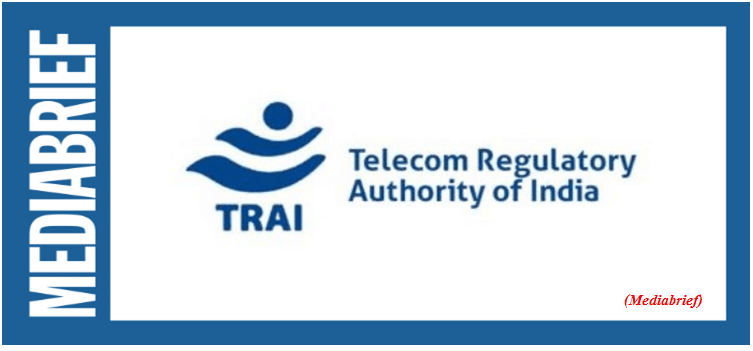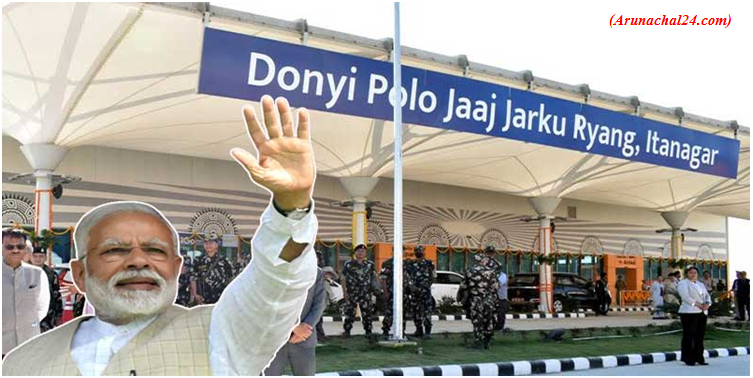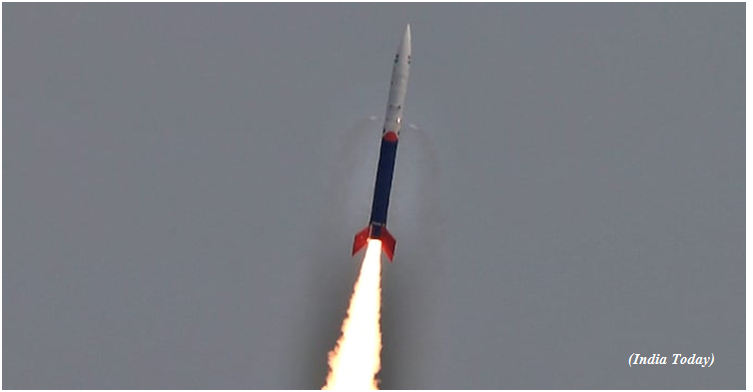TRAI releases recommendations on “Regulatory Framework for Promoting Data Economy” (GS Paper 3, Economy)

Why in news?
- Recently, the Telecom Regulatory Authority of India (TRAI) released its recommendations on ‘Regulatory Framework for Promoting Data Economy Through Establishment of Data Centres (DCs), Content Delivery Networks (CDNs), and Interconnect Exchanges (IXPs) in India’.
Background:
- National Digital Communications Policy (NDCP) 2018 under strategy, provision number 2.2(f). (i)envisages “Evolving enabling regulatory frameworks and incentives for promoting the establishment of International Data Centres, Content Delivery Networks, and Independent Interconnect exchanges in India”.
- Accordingly, the TRAI issued detailed Consultation Paper (CP) on the subject and after considering the comments/ inputs received from the stakeholders during consultation process and further analysis of the issues and has finalized these recommendations to boost to digital infrastructure ecosystem in the country including DCs, CDNs and IXPs.
Salient features of the recommendations are as follows:
Data Centres
Facilitating & Incentivizing establishment of Data Centres (DCs) and DC Parks
- Authority has recommended to bring out Data Centre Incentivization Scheme (DCIS) for establishing Data Centres (DCs) and Data Centre Parks (Dc Parks). DCIS to have two list of incentives –
- Certain Centre specific fiscal and non-fiscal incentives and can be rolled out by the Central Government.
- The other in form of a guideline to the States; leaving flexibility to States to announce fiscal incentives through their policies.
- Operationalizing a Data Centre specific portal on National Single Window System (NSWS) for
- Time-bound single window clearances with provision for deemed approval after elapse of prescribed timelines for non-critical category permissions
- Mandatory online registration of new DCs/DC Park operators without any obligation or registration fees. This will be purely for statistical and record purposes.
- Issue of notifications, announcement of schemes & benefits, facility to interact and respond to queries of potential investors, and grievance redressal of existing and prospective DC/DC Park operators.
- A national level DC Readiness Index (DCRI) framework to be implemented by Central Government to rank Indian states as per their suitability to promote DC sector. An indicative list of parameters and their weightages for ranking the States has been suggested.
- Central Government should prepare guidelines listing out the incentives for the Data Centres and DC Parks for the states that have scanty DC footprints, in line with other advanced states. The scheme should, inter-alia, offer incentives in form of land, capital subsidy and Interest subsidy.
- Establish DC Economic Zones (DCEZs) - Out of suggested list of 33 SEZs which are located in areas with abandon power and water, one SEZ can be identified each in State of Andhra Pradesh, Kerala, Karnataka, Maharashtra, Haryana, UP, MP, Gujarat, Rajasthan, and Odisha, for either converting them into DCEZs or for carving out zones out of these SEZs for establishing DCs/DC parks.
Developing India specific building norms, standards, and security certification framework
- BIS should be entrusted upon for developing different India-specific building standard for construction of DCs and to develop India specific standard-based certification framework for the DCs.
- For addressing security aspects of DCs, TEC and STQC should jointly work to develop DC security certification framework based on third party Audits.
Connectivity to Cable Landing Stations (CLS)
- For coastal states intending to promote setting up of new CLS, it has been recommended that they may consider incentives and facilitations of CLSs as has been undertaken by State of Gujarat in its IT/ITeS Policy 2022-27.
- For laying and maintaining OFC infrastructure to CLS, RoW charges may be waived off.
Power related
- DoT to take up with Ministry of Power to look into the submissions made by stakeholders for formulation of a DC conducive yet simplified framework for power addressing the issues that have been flagged in the recommendations, inter-alia, including:
- Energy banking provisions for DC/ DC park operators who opt to produce renewal energy for consumption for DC/ DC Parks should be extended to yearly basis.
- Providing land on priority and on concessional rates to DC/ DC park operators for establishing solar power plants.
- DC and DC Park sites should be allowed to operate as backup power infrastructure without any hindrance from state pollution control boards (SPCB) or Central pollution control board (CPCB).
Promoting Green DCs
- Indian Green Building Council (IGBC) along with Telecommunication Engineering Centre (TEC) should be entrusted with task of framing certification standards of green DCs in India.
- Government should form a scheme to invite Requests for Proposal (RFP) on an experimental basis for new technology/methods/processes that can be adopted for promoting green DCs.
Capacity Building
- National Telecom Institute for Policy Research & Training (NTIPRIT) under Department of Telecommunication (DoT), MeitY, All India Council for technical Education (AICTE) and Telecom Sector Skill Council (TSSC) should closely collaborate with DC industry to develop tailor-made short and long-term courses.
Addressing demand side issues of Digital Data Infrastructure –
- Data digitization, sharing and monetization: A statutory body Data Digitization and Monetization Council (DDMC) for steering the data digitization drive be prescribed at the Centre,
- Data Ownership: Government should put in place a data sharing and consent management framework on lines of DEPA framework to provide telecom subscribers consent based option to share their KYC data with recipient TSP when they port their numbers.
- Data Ethics: DDMC should also be entrusted with responsibility of putting in place an overarching framework for ethical use of data both by Government as well as by corporate in India. The framework should address the generic as well as vertical sector specific requirements.
Content Delivery Networks (CDNs):
- CDNs play an important role in the value chain of content delivery ecosystem. The internet traffic, which was earlier being delivered by ISPs alone, is now being delivered by ISP and CDN combined. ISPs perform load balancing, traffic engineering and offers guaranteed quality of service to end users.
- CDN Players also leverage various techniques like load balancing, caching, optimization, use of security protocols, etc. for ensuring better delivery of content to end users in association with TSPs. CDN players are major contributors to the network traffic and can affect the overall quality of service.
- TRAI has recommended that CDN players should be registered with DoT through a simple online registration process. The suggestive draft for guidelines for registration of CDN players along with registration form and registration certificate has been recommended with one time registration fee of Rs 10,000.
- The incentives recommended for DCs should also help in proliferation of CDNs in the country and this would in turn provide the boost to digital infrastructure ecosystem, including CDNs and IXPs.
Interconnect Exchanges Providers (IXPs):
- Currently, IXPs are required to obtain Internet Service Providers (ISPs) license which has several onerous licensing conditions related to subscriber verification, security etc which are not relevant to them. This creates artificial entry barriers.
- To address this issue and promote setting up of more IXPs, especially in Tier-II and Tier-III cities, TRAI has recommended that a separate authorization in Unified License may be created for IXPs with terms and conditions that are much less onerous than ISP license authorization.
PM inaugurates Arunachal's first greenfield airport, 600-MW Kameng hydoproject
(GS Paper 3, Infrastructure)
Why in news?
- Recently, Prime Minister inaugurated Arunachal Pradesh’s first greenfield airport, Donyi Polo Airport, in Itanagar’s Hollongi and a 600-MW Kameng hydropower station in West Kameng district.
- The foundation stone for the airport was laid by PM Modi in February 2019.

Details:
- Named after ‘Donyi Polo’, the deity revered by the indigenous communities of the state, the airport will fulfill an important aspiration of the people of Arunachal Pradesh and upper Assam.
- It will be the third operational airport for Arunachal Pradesh, taking the total airport count in the North-East region to 16.
- From 1947 to 2014, only nine airports were built in the North-East. In a short span of eight years since then, the Modi Government has built seven airports in the North-East.
Features of Donyi Polo Airport:
- The Donyi Polo airport has been developed by the Airports Authority of India at an estimated cost of Rs 645 crore.
- Spread over a 4,100 sq m area, Donyi Polo airport will be equipped with all the modern facilities for passengers.
- It will have a 2,300 meter-long runway suitable for landing and take-off of Boeing 747.
What is a Greenfield Airport?
- A greenfield airport is an aviation facility with greenfield project characteristics.
- The designation reflects certain environmental qualities (using previously undeveloped or empty greenfield land, for example) and commissioning, planning and construction processes that are generally carried out from scratch.
- While a green field in nature is defined as a wide expanse of natural land (meadow, prairie, grassland), here greenfield denotes that a project lacks any constraints imposed upon it by prior work or existing infrastructure. A brownfield, on the other hand, remodels or improves upon existing facilities.
Kameng Hydro Project:
- The Kameng hydroproject has been developed at a cost of more than Rs 8,450 crore in an area spread over more than 80 km in West Kameng district.
- It is expected to make Arunachal Pradesh a power surplus and benefit the national grid in terms of stability and integration.
- It will contribute in a major way towards fulfillment of the country's commitment to the adoption of green energy.
Why is the Donyi Polo Airport important?
- The North Eastern part of India is connected with the rest of the country through a narrow corridor popularly called Chicken's neck.
- Arunachal is even far in the North East with the mighty Brahmaputra acting as a great divide.
- Arunachal is the largest state of North East India, spreading from Bhutan on its western border to Myanmar in the east.
- It shares a sensitive border in the north with Tibet's autonomous region of China. Post partition, the natural lines of the movement were severed and the northeast region became landlocked.
- There were decades of political struggle, armed conflict, and insurgency in this region after independence.
- Successive governments did make attempts to bring political stability to the region by signing pacts with insurgent groups or mainstreaming their leaders through the electoral process.
Skyroot’s Vikram-S rocket launched successfully
(GS Paper 3, Science and Tech)
Why in news?
- Recently, Skyroot Aerospace made history by launching India's first privately made rocket Vikram-S into space.
- The successful launch marks the entry of the private sector into the Indian space program, which has so far, remained government-controlled and funded.

Details:
- The Vikram-S rocket was launched from the Indian Space Research Organisation (ISRO)'s Satish Dhawan Space Centre in Sriharikota.
- Vikram-S is named after the Father of Indian space program Vikram Sarabhai.
- It carried out a suborbital mission with three different playloads from Chennai-based start-up SpaceKidz, Andhra Pradesh-based N-SpaceTech and Armenian BazoomQ Space Research Lab.
Salient features of Vikram-S:
- Vikram-S is a small-lift launch vehicle having a payload of 480 kg to Low Earth Orbit.
- It also has three solid fuel-powered stages. Each stage has a burn time ranging between 80 and 108 seconds.
- The rocket stage is built with high-strength carbon fibre structure, solid fuel, Ethylene-Propylene-Diene terpolymers (EPDM) thermal protection system, and carbon ablative nozzle.
- Vikram-S rocket is powered by the Kalam-80 engine.
Variants of Viktam rocket:
- The company is developing three variants of the Vikram rocket, named after Dr. Vikram Sarabhai, the founder of the Indian space program.
- While the Vikram-I can carry 480 kilograms of payload to Low Earth Orbit, the Vikram-II is equipped to lift off with 595 kilograms of cargo.
- Meanwhile, Vikram-III can launch with an 815 kg to 500 km Low Inclination Orbit.
Skyroot Aerospace Private Ltd:
- Skyroot Aerospace Private Ltd, founded in 2018, is the brainchild behind the Vikram-S rocket.
- The company has been co-founded by Pawan Chandana and Naga Bharath Daka, who previously worked at ISRO.
- Their aim in creating Skyroot Aerospace is ‘affordable, on-demand and reliable ride to space.’
What it holds for private sector in space?
- The Vikram-S launch was made possible after the government opened the space sector for private firms in 2020 and allowed them to build rockets and satellites. They have also been allowed to use ISRO’s launching facilities.
- The Prarambh mission also shows the world the capabilities of the private sector in India.Entry of the private sector will also widen the space economy of the country.
- The Indian space industry was worth around $7 billion in 2019 but has the potential of growing to $50 billion by 2024.
- Skyroot’s success will also give a fillip to other companies to enter the space sector, which, in turn, can boost defence systems and manufacturing.
- For instance, Agnikul Cosmos recently test-fired their semi-cryogenic Agnilet engine at ISRO’s vertical testing facility at Thumba Equatorial Rocket Launching Station (TERLS), Thiruvananthapuram.
- Also, several of ISRO’s Small Satellite Launch Vehicles (SSLV) are likely to be manufactured and operated by private players soon.
Way Forward:
While Prarambh was a demonstration mission, it was still a full-scale suborbital launch for the company, which aims to strengthen the private space sector in the company.




